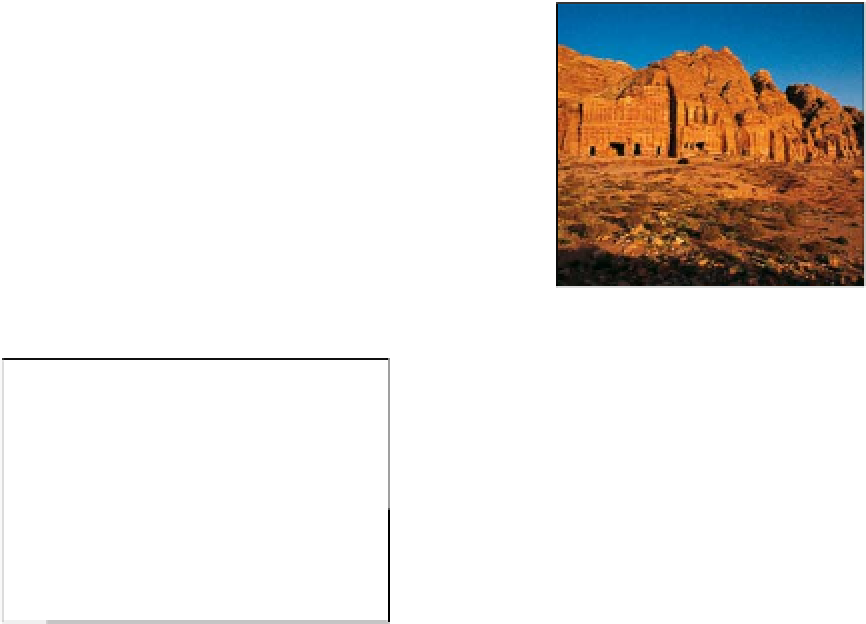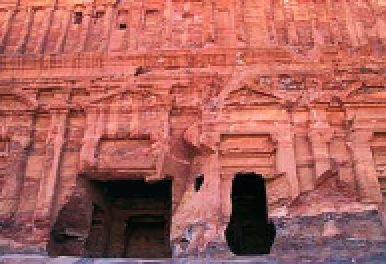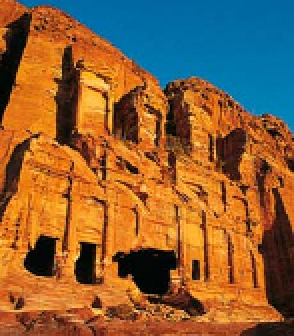Travel Reference
In-Depth Information
The Royal Tombs
Carved into the base of El-Khubtha mountain, a short
detour to the right at the point where the Outer Siq
opens out on to Petra's central plain, are the Urn,
Corinthian and Palace Tombs. They are collectively
known as the Royal Tombs, their monumental size
suggesting they were built for wealthy or important
people, possibly Petran kings or queens. These tombs
and their neighbours are also remarkable for the
vivid striations of colour rippling through their sand-
stone walls, an effect heightened in the warm glow
of the late afternoon sun. Particularly striking are the
Silk Tomb and the ceiling inside the Urn Tomb.
Panoramic view of the Royal Tombs from
the direction of the ruined city
Palace Tomb
The largest of all the Royal Tombs, the Palace
Tomb had a grandiose façade on five levels
which was taller than the rock into which it
was carv
had t
Of
chambe
middle two
connect.
design has baffled archaeologists
because of its lack of symmetry. The
doorways, each in a different style,
are a clear illustration of this.
THE ROYAL TOMBS
First in the sequence of Royal Tombs is the towering Urn
Tomb
(far right)
, reached by a stairway. Its name refers
to a relatively tiny urn on top. Further along is the badly
eroded Corinthian Tomb, which seems to be modelled
largely on the Treasury, and beyond that the Palace Tomb,
thought to be based on Nero's Golden House in Rome.
For hotels and restaurants in this region see pp262-3 and pp279-80





















